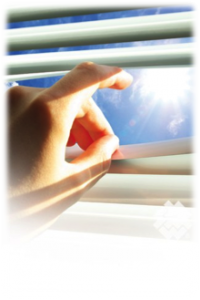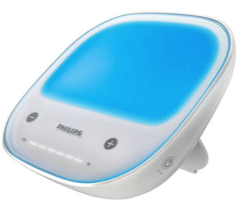Seasonal Affective Disorder (SAD)
Not just the winter blahs
By Erin Doherty
During the winter season, with darker mornings and less daylight, there is often a large impact on our mood. I hate looking out the window at 3:30pm and thinking it’s the dead of night! Sunlight lifts our spirits and makes us warm on the outside, while dark dull cloudy days often make us feel unhappy and wishing for the sun to be back. Although these effects may be subtle for some of us, others may feel these changes more drastically. Are you someone that suffers from SAD?
SAD, or Seasonal Affective Disorder, is a type of depression that is triggered by the change in the seasons, mostly by the gloominess that autumn brings, and often lasts until the following season begins. The exact cause of this condition is still under discussion, but there are some speculated factors that contribute to this disorder. The decreased sunlight can disrupt our circadian rhythms (our internal biological 24 hour clock) that affects our sleep, hormone levels, blood pressure, and body temperature. Our circadian rhythm is trainable, so exposure to light, or lack off, may alter the hours that our body feels that it should be asleep. Depending on the quality and length of sleep, REM may be missed or cut short, leading to grogginess and fatigue as this is the stage of sleep in which our muscles are most relaxed.
A decrease in melatonin and serotonin levels can also contribute to a disruptive sleep pattern. Melatonin is a hormone produced in the pineal gland, which can be swayed by circadian rhythm. Often used as a natural sleep aid, you can take melatonin to help restore sleep balance. Serotonin, a neurotransmitter that relays signals between nerve cells, also decreases with less sunlight. Serotonin is a mood affecter; and decreased levels can lead to depression. Exposure to light will increase serotonin, which is associated with being in a better mood. (Keep in mind, too much serotonin causes symptoms that can range from mild shivering diarrhea to more severe effects like muscle rigidity, fever and seizures).
Symptoms of SAD
This disorder is often written off as “winter blues”, but do any of these apply to you?
- Disturbed sleep: oversleeping, not getting enough sleep, or having ineffective sleep
- Feeling increased tiredness and/or having low energy
- Change in appetite: craving for high-carb foods
- Winter weight gain
- Increased irritability with others: more easily frustrated, annoyed and rejection may be taken more harshly
- Lethargic feeling: Increased tiredness and heavy feeling in limbs
One or two of these symptoms alone may be manageable. However, if you have many of them and they last for days on end or have thoughts of suicide, speak with your doctor right away.
What can I do to prevent SAD?
- Make your daily environment brighter. Open blinds, or move your desk to face the window
- Go outside into natural daylight. Have lunch in the park, go for a walk, or choose an outdoor activity over sitting inside. Yes, even in Vancouver, sometimes the sun comes out!
- Exercise. It’s a natural stress and anxiety reliever
- Pineapples, bananas, oranges, and small grains like barley or oats have been shown to help increase melatonin levels
- Caffeine suppresses serotonin. If you need a coffee, have it after a meal and limit how much you drink.
- If possible, book a quick getaway somewhere sunny during the winter months!
What about those special blue UV lights?
If techniques at home are not doing the trick, other measures can be taken. Light therapy, psychotherapy, or certain medications may be discussed with you doctor. Some people try light therapy, or phototherapy: exposure to a bright light that mimics natural daylight. This “daylight” causes a chemical change in the brain that works towards a better mood. Devices can be purchased for home use and range from $90-$160. Just 20-30 minutes per day help to make you feel more energized and active. Best times for light therapy are in the morning to early afternoon. Some authors suggest a budget friendly method of sitting within 3 feet of a 300 watt bulb for 20 minutes three times a day.
Should I get professional help?
Psychotherapy helps someone with SAD identify negative thoughts and behaviours, and find ways to manage their stress and outlook. If symptoms are severe, antidepressants may aid to someone with SAD. If someone has a history of SAD, antidepressants may be taken before the change in the season occurs. Keep in mind that everyone has different reactions to medications, and a certain medication that works for one individual may not work for another. Check with your family doctor for details on what treatment would work best for you.
The following links offer more resources and direct help if you have further questions:
HealthLink BC – www.healthlinkbc.ca
Mood Disorders Association of BC www.mdabc.net or call 604-873-0103 (in the Lower Mainland) or 1-855-282-7979 (in the rest of BC)
Canadian Mental Health Association, BC Division www.cmha.bc.ca or call 1-800-555-8222 (toll-free in BC) or 604-688-3234 (in Greater Vancouver)
Although commonly disregarded, SAD can be a serious matter. Awareness of mood swings, appetite, and sleep patterns should be heightened at the turn of a season. If you are someone or know someone with SAD, there is hope!
Good luck, and let us know if some of these tips helped, or other solutions we might not have mentioned that have worked for you.









